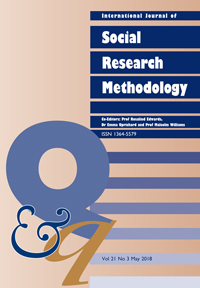Bernard, Josef, Hana Daňková, Petr Vašát. 2018. „Ties, sites and irregularities: pitfalls and benefits in using respondent-driven sampling for surveying a homeless population“. International Journal of Social Research Methodology. ISSN 1464-5300. Dostupné z: https://doi.org/10.1080/13645579.2018.1454640
Respondent-driven sampling (RDS) is a survey method for hidden populations and, as such, it offers a suitable approach for sampling the homeless. Surprisingly, the practical use of RDS in surveying homeless populations has only sporadically been described in the professional literature so far, and the specifics of using RDS for sampling this group have not been reflected in depth. The goal of the article is to investigate how three specific concerns, namely the transitional character of social ties among the homeless, problems with locating the interview site, and the irregular use of coupons, affect the sampling process. The findings of the article are based on experience using RDS for creating two independent samples of homeless persons in two Czech cities. Worries of poor referral effectiveness were disproved, but poor validity of the network size indicator, tendency towards irregular use of coupons, and negative effects arising from selecting service centres for the homeless as survey sites were confirmed.
Autoři
- Doc. PhDr. Josef Bernard, Ph.D.
- Mgr. Hana Daňková
- Mgr. Petr Vašát, Ph.D.
Oddělení
Témata
Město a vesnice, Metodologie výzkumu, Sociální nerovnosti, Sociologická data
